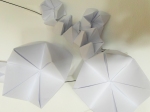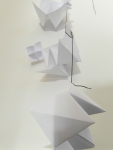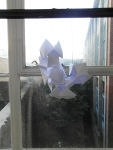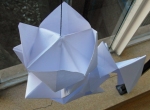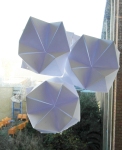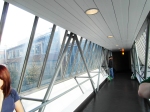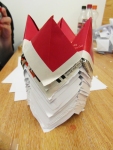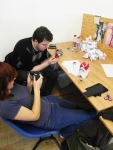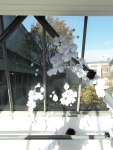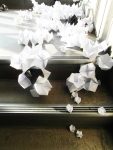Throughout this semester, I have been working in a team with Jennifer Heilbronn, Colin Adams, Jana Šmuhařová, Eilidh Alexander and Susan Macloed. We have been working on a RSA brief which was to connect the older and younger generations in an environment, event etc. I think that we successfully came up with a great idea that could benefit the older and younger generation and connect them much more!
‘The Social Centre’ is a project that works at curbing the loneliness and isolation of the older generation by connecting them to the younger generation. The connection is made forth mostly through shared interest or needs.
We initially brainstormed what we thought were the stereotypical perceptions of both generations and their opposites, then how to connect them. We did this in order to gain an insight into our target audience and how we could abolish the stereotypes in order to make the generations more accessible. Through several discussions we decided to each think of an idea for our next meeting that we could think about developing.
Each member of the team had their own ideas of how to ease the loneliness felt by the elderly and how to introduce them to the modern culture that the majority seem out of touch with. Initially and coincidentally Two people in the group thought of reinvigourating the cinema system to appeal to all ages. Their idea was to have a more luxurious place that would invite the elderly in, with tea and coffee and a selection of traditional savoury foods alongside the cinema’s popcorn, chocolate and fizzy juice. They also thought about the films that would be on show, opting to have a wide range of summer blockbusters, art house drama and ‘the classics.’ This would allow the generations to bond over films, with the old teaching the young about classical cinema and it’s impact on new cinema, and the young teaching the old about 3D Cinema and modern franchises such as Harry Potter and Transformers.
A similiar idea to this was a music night, which would include disco’s, dances and open-mic nights that both generations could participate in. Similarly to the cinema idea the type of music would differ each time in order to please everyone.
One person researched lost crafts. It was decided that the crafts the older generation had learned in their childhoods and had passed on were soon going to become extinct and that it would be beneficial for the old people to pass them on once more. This would give them a sense of worth and allow them to create bonds with their ‘students.’ The main lost crafts that we looked at were Knitting and Traditional Cooking though other factors such as Ballroom Dancing were briefly considered. We also thought that we could use the younger people involved and allow them to teach the older generations about the internet and technology. The internet, today, is so important and we felt that it would be so beneficial to the older generation to have these skills. It would also give the younger generation a sense of pride and self-worth knowing that they are able to teach an older person something. These ideas were then incorporated with another member of the groups idea of ‘Active Learning.’ Active Learning would allow people to learn through things like Bingo and Pub Quizzes as well as demonstrations of it’s member’s hobbies. This would allow the people involved to learn in a fun and invigourating way.
It was suggested that a number of these ideas would all come to life in a ‘coffee shop’ by the last of our team members. This was in order to create a familiar relaxed area that people could relate to and has no valid age specifications (unlike a bar which would exclude younger people.) We decided that we could take many attributes of a coffee shop such as the atmosphere and the idea of serving food and drinks but that in some instances it would be impractical to hold demonstrations and dances.
As a group, we found it particularly easy to combine everyone’s ideas. The idea of a community centre kept cropping up yet it was felt that it was slightly out of date. Just by changing the word community to social we thought that it would appeal to a wider audience and ‘The Social Centre’ was born.
The Social Centre would rely on volunteers some older and some younger that would act as the leaders, taking charge of the funds etc. It would incorporate movie nights (developed from a fully blown cinema) music nights, demonstrations and crafts as well as being equipped with a computer suite and an atmospheric canteen not unlike the coffee shop idea. This would allow a wide range of people to come and enjoy completely different things whilst gaining a sense of socialisation and not only learning new skills and ideas, but learning about themselves.
In order to gain a better understanding of this we researched thoroughly in to different fields, amongst other things, looking at methods of active learning and advertising as well as costing. How to modernise knitting for a newer audience and how important it is to make traditional cooking relevant again.
Social Centres and organisations of a similar nature can be found worldwide. In Britain alone, there are several permanent Social Centres, as well as a small number of temporary establishments, which are often forced to change venue or close due to lack of funding or space. Websites such as ‘UK Social Centres Network’ are useful for connecting the different Social Centres and ‘Autonomous Spaces’ found in the UK and for keeping people updated about the Social Centres in their area, changing venues and the activities taking place. Social Centres and Autonomous Spaces tend to be community funded projects and are run by volunteers. While support and funding can sometimes be gained by cooperating with businesses and charity based organisations, such as the Lottery Fund, running a fully functioning Social Centre to the standards our group discussed and to accommodate the facilities we designed, would be very costly, especially since it would be a non-profit organisation. Some of the costs are as follows:
• A safe, secure premises, either rented or owned with purpose permit
• The appropriate Fire Safety/Health and Safety measurements
• Disabled access & facilities
• Electricity, water, sewage, telephone and broadband services
• Electrical equipment, sorfware, furniture and games/sports equipment
• Insurance
• Health and Safety/First Aid training/clearance for staff/volunteers
• Paid staff/cleaners (where applicable)
Costing such a project in the current economic climate, without a definite idea of the size and location of the venue, the number of users and trained staff and the opening hours, is a very nearly impossible. However, if our team were to take this idea further, the task of costing would be worked out by calculating rent of the premises, health and safety procedures/insurance/appropriate staff training courses depending on the estimated/maximum expected number of users, previous/estimated bills for services, equipment and furniture.
After the main points of the social centre were finalised we looked into it’s advertising campaign. We chose traditional methods of posters and bus shelters so that the older generation would hear about it and facebook and twitter in order to appeal to the younger generation. A logo that would be changed depending on which town you are in was designed using a clear and simple typeface with a modern edge. This was so that people could identify it from posters and on the internet and that if any merchandise was made people would want to be a part of it.
awaiting posters, menu’s, facebook page and clients visuals from team members.
We feel the Social Centre would work as it would break the barrier between community centre’s and youth clubs allowing every single person to attend it. It appeals to a mass-market as it incorporates music, cinema, education and craft and we have looked at ways to get it out there for the mass-market to see it.




























